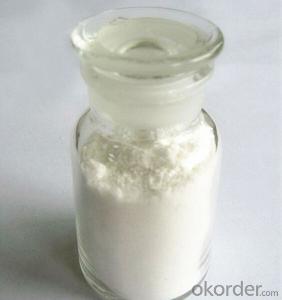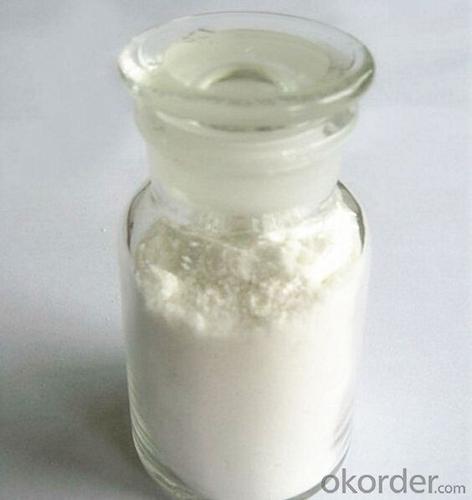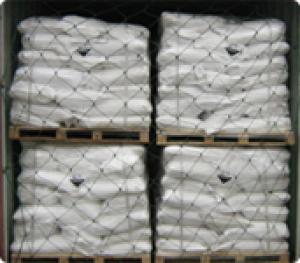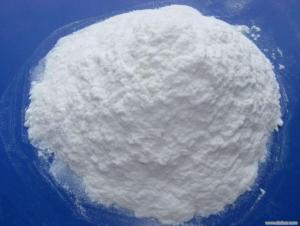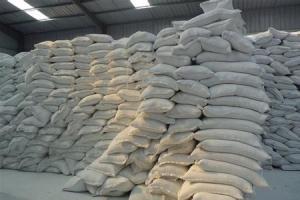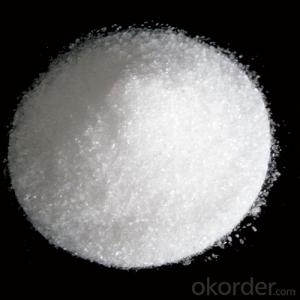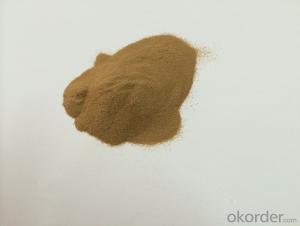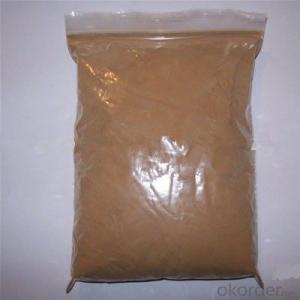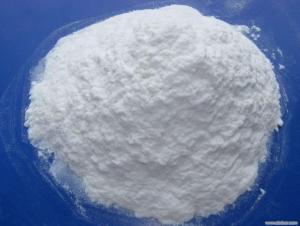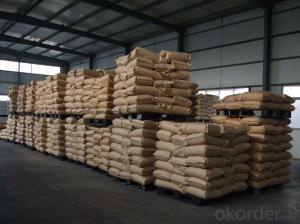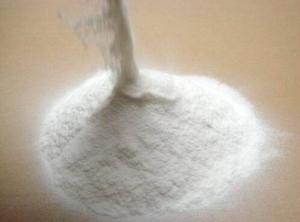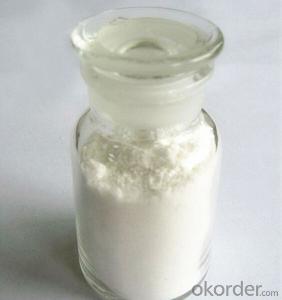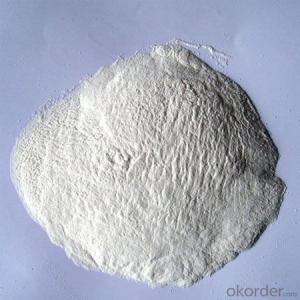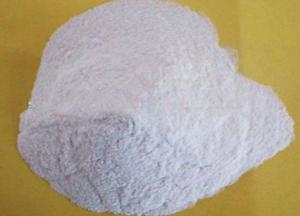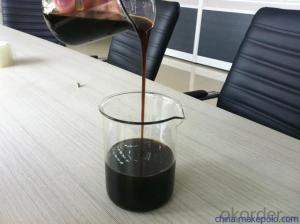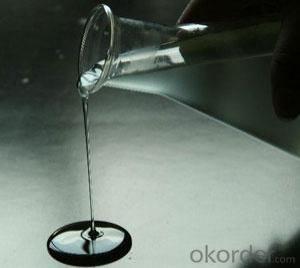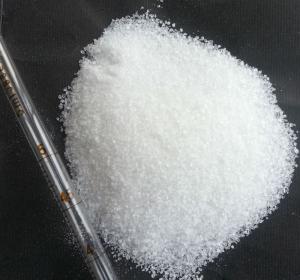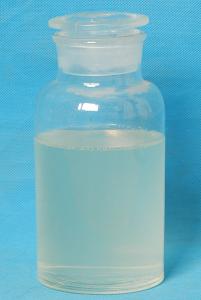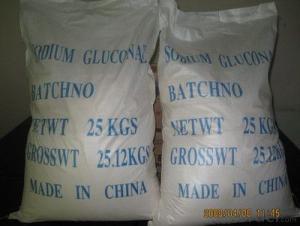Hydroxyethyl Cellulose (HEC)-High quality
- Loading Port:
- China Main Port
- Payment Terms:
- TT OR LC
- Min Order Qty:
- -
- Supply Capability:
- -
OKorder Service Pledge
OKorder Financial Service
You Might Also Like
Product introduction:
HEC is a series of non-ionic soluble cellulose ethers, which can be dissolved in hot and cold water, and has the characteristics of thickening, suspending, adhesive, emulsion, film coating and super absorbent polymers protective colloid, which is widely used in paints, cosmetics, oil drilling and other industries.
Physical and chemical index:
ITEM CAS: 9004-62-0 | INDEX |
Moisture % | ≤5.0 |
Ash content % | ≤1.0 |
Viscosity mpa.s | 300-150000 |
≥82 | |
PH | 5.0-8.0 |
D.S. | 1.8-2.5 |
Appearance | white or off-white fibrous or granular powder, odorless, tasteless |
Application:
Oilfield Industry Application Guide
● HEC thickening agent can be used as thickner of the well workover fluid and cementing agent. Help to provide clarification of the low fixed content solution, thus greatly reducing the structural damage to the wells. The liquid thickening by Hydroxyethyl Cellulose can be easily decomposed by acids, enzymes or oxidants, greatly improving the ability to recover hydrocarbons.
● Fluid in the well, HEC is used as proppant carrier. These liquids can be easily cracked through the process.
● HEC configuration using drilling fluid, based on its low solids content, can effectively increase drilling stability. These properties can be used to inhibit the fluid medium to high hardness of the rock and heavy shale or shale drilling.
● Reinforcement in the cement operations, HEC can reduce the hydraulic friction, minimize the loss of rock and water loss.
Oil industry use recommended:
Specification | Viscosity (2% solution, 25℃) | Application |
CMAX-300DR | 240-360mPa.s | Cementing |
CMAX-100000DR | 80000-120000mPa.s | Oil drilling |
CAMX-150000DR | 120000-180000mPa.s | Oil drilling |
- Q: I have been considering spending money to buy a fuel additive to increase my mpg and hopefully as an end result help me save money on gas. I am leery to start buying tablets though as it is an added expense in itself. Does anyone have any experience with diesel fuel additives? If so, can you recommend one that works?
- I work in as a fleet mechanic on International trucks. There is no diesel additive on the market that will increase your fuel mileage. There are plenty of additives out there, but nothing that will improve your fuel mileage. If there was, we would be using them in our fleet. The only thing we ever put in our fuel is automatic transmission fluid. We put a quart in the fuel about every third tank because it is high detergent and helps keep the nozzles clean. I am sorry to tell you, the only way to improve your fuel mileage is to change driving habits. This didn't set well with our drivers either.
- Q: Food additives with coloring fruit green fruit has no harm
- Fruit green is lemon yellow and bright blue two kinds of pigment mixture, are edible pigment, the state allowed to eat. As long as no more than limited consumption, are safe.
- Q: that are still allowed.
- Yes.The front tire being narrower dissalows the proper ability to stop the motorcycle and properly corner their by creating a hazardous condition for the rider.In this case the tires are not inter changeable because one has a 17 rim and the other has a 19 rim.Have a great day.
- Q: Hi, has anyone used Lucas oil stabilizer in there car or truck? If so what for and what differences did you hear/feel? Thanx
- The oil viscosity determines how thick or thin it is. There is little difference between 5w30 and 10w30, so it should be fine. The first number refers to cold start ability so if you drive in below zero temperatures the 10w30 may be a little worse. Otherwise I wouldn't worry. All motor oil should also be API certified so that it meets certain quality standards.
- Q: I am thinking of adding this to the oil of my classic corvette and wondered if it is worth the money. I see it advertised on different venues and have never used the product.
- Lucas makes good products and I have used the transmission fix with great sucess but really any engine additive is a waste of money in my book, if you want more protection I would use a synthetic oil like mobil 1.
- Q: If it isn‘t then what property is it?
- It's an example of the additive inverse. -12 is the additive inverse of 0. 0 is the additive identity element, just as 1 is the multiplicative identity element. The inverse is the number (for the specific operation) that yields the identity element.
- Q: Food additives CMC various models and differences?
- Divided into detergent, food additives, drilling fluid, food additives, food additives, toothpaste
- Q: Edible oil without any additives can be stored for how long
- Seal save for one year is no problem
- Q: My kittens are both 8-9 months old. I am introducing them to teeth-brushing, but they don‘t seem to care for it too much. I‘m using CET poultry flavored + their double-sided brush. Right now, I‘m just swiping it across their teeth to let them get used to the flavor and the sensation or whatever.When I was purchasing it from the vet, the cashier told me to instead get a water additive, but it contained Xylitol, which people are still arguing over whether or not it‘s bad for cats.
- What about the CET water additive? You obviously already know about their products, so perhaps that one has xylitol? EDIT: Yes, it does contain x. I don't know. If I were you, I'd read up on the alleged negative effects of xylitol so you have a decent understanding of what it's supposed to cause. EDIT: It's very toxic for dogs. Nothing has been found for cats. So it *appears* to be safe enough for them. Then try to decide if the benefits outweigh the risks. I used to use their additive but my girls only eat wet food now and don't drink as much. I know I could still use it but it just seemed kind of pointless to me. EDIT: Personally, I think I'd skip it. If you're going to be brushing their teeth and if you're using the CET treats too, I think you'll probably be good. Perhaps in another year or two it'll be worth checking into again. Also, rather than water you can look into food additives. If you want to take that extra bit of precaution, that is.
- Q: I generally change my oil pretty regularly, but last time I went a little too long and my oil volume was low. Pressure always looked good.
- it wont help anything the best thing you can do is change the oil often . you start putting 'super slickum' additives in an old motor all it will do is make it leak more
Send your message to us
Hydroxyethyl Cellulose (HEC)-High quality
- Loading Port:
- China Main Port
- Payment Terms:
- TT OR LC
- Min Order Qty:
- -
- Supply Capability:
- -
OKorder Service Pledge
OKorder Financial Service
Similar products
Hot products
Hot Searches
Related keywords
